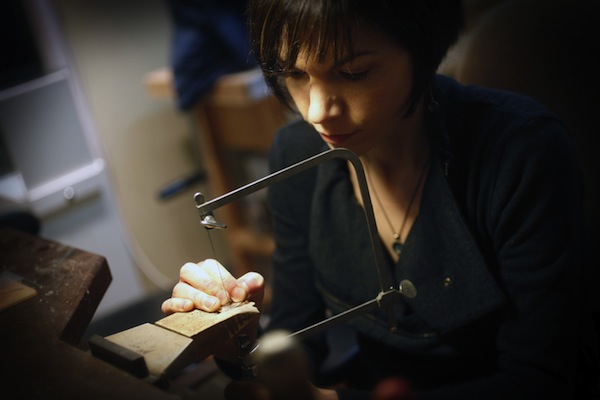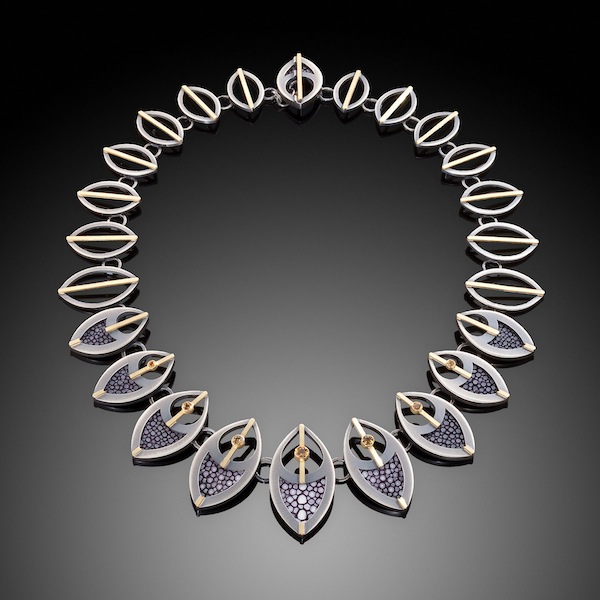This is part of a series of posts highlighting the art fair and festival industry. Know someone we should talk to? Email your suggestions!
Creative Conversations: An interview with jeweler Megan Clark
Megan Clark is a jeweler based in Raleigh, NC. She has now been travelling around the country participating in fairs and shows for the last few years. You can find more of her work at http://www.meganclarkjewelry.com
Recently, ZAPP intern Anna Charney interviewed Clark about her experiences thus far in the industry.
ZAPP: What did you do before you began to do art fairs and what brought you into this field? For how long have you been a working artist?
Clark: After graduating from college I got a job working as a bench jeweler for an artist/metalsmith in Raleigh. Then the recession hit and I found myself out of work. I had already intended to eventually start my own business, but was terrified of the instability of not having a steady paycheck. When I lost my job and I couldn’t find another on in my field, I no longer had an excuse! I started my business in 2009 – I am so glad that I took the plunge!
ZAPP: What is your educational background in the arts?
Clark: I went to the Savannah College of Art and Design originally intending to study fashion. I took a metals class as an elective my sophomore year and fell in love with the medium. I quickly changed majors. I graduated in 2005.
ZAPP: What is your studio and planning process like?
Clark: I am a big fan of “to do” lists. I try and have an idea of what I’m working on before i get to the studio. This has become especially important in the past few months, because my partner who has been coming to shows with me for the past two years has recently become my first apprentice!
I usually work on several pieces at once – it keeps my mind fresh and helps me avoid mistakes. It also allows me to do similar things on different pieces together – it is my version of “production” work (i.e. I’ll saw things out in groups, then file, etc.)

Megan, hard at work, sitting and sawing at her jeweler’s bench. Image courtesy of Megan Clark.
ZAPP: What is your process like and what inspires your pattern based jewelry? Did you ever work in any other mediums besides jewelry?
Clark: I hand cut and fabricate everything except some of the chains for pendants. I generally look at natural patterns and architecture for inspiration – I love the visual effect of repetitive shapes in patterns and the crisp clean quality of architecture. I draw everything I make first – a rough sketch, which I then refine using tracing paper. After I have a final design I use a photocopy of that as my piercing template – I glue it to my metal sheet and saw through it.
The stingray pieces have been an evolution of my pattern pieces – instead of mimicking nature I decided to incorporate the actual leather into my pieces. I source it responsibly and use scrap material for most of my work.
And my grandmother is a portrait painter, so I was encouraged to draw and paint from a young age. I did a lot of sewing in high school as well. I still enjoy drawing but have mainly drawn jewelry in recent years.

A necklace from Clark’s stingray series. Copyright Megan Clark, 2012.
ZAPP: What do you see for the future of fairs and festivals? Where do you hope they are headed and what do you see as threats to the industry?
Clark: The neatest thing about art festivals is that they allows patrons to directly interact and purchase art from artists that come from all over the country. They get to meet the person that made the art, which not only gives it greater meaning, it also is inspiring. I think that there is a future for festivals, but what they become depends greatly on the focus of the organizers and promoters. Shows are greatly shaped by the ways that they are planned and marketed. In order to get the best artists at events, they need to have high rates of success at them. If a show isn’t properly advertised, there will not be the attendance needed for this to happen. If the ads focus more on the food and music then on the art, the show is not likely to get serious art collectors to attend. If a show is too large for its pool of patrons, sales become diluted. Show layout can also severely affect the chances of a successful show. It is hard to compete with a sponsor booth handing out free samples, or a kettle corn tent. When food and artist tents are kept in separate areas, it helps keep the focus where it should be. There will always be positive and negative sales reports for any show, but the shows that seem to have the happiest artists take the above into account.
The biggest threats I see from the artist’s perspective are markets becoming over saturated with too many shows, and that buy/sell seems to be able to sneak in to a lot of events. This takes booths away from [genuine] artists that rely on them and misleads the public on proper pricing. I think this happens because of the large number of applications that are received and the fact that artists are being judged on photographs, not their actual work. The best ideas that I have heard that would help with this issue are: for someone on the show staff to do a reference check (Google search) on the artists that the jury has chosen prior to releasing the invite list, and then for show staff to also walk the show and compare work on display with the images submitted to make sure that the images were representative of the artist’s style and craftsmanship. Some shows already do this and the work at them reflects a higher standard. These practices wouldn’t completely resolve the issue of buy/sell at art festivals, but it would certainly help. Although, I don’t know that this can ever be completely resolved given the number of applicants to shows and the sensitivity of the issue.
ZAPP: If you could have given one piece of advice to yourself five years back, what would it be?
Clark: Trust yourself! You will not always be right, but you will learn from your mistakes. Also, talk to other artist – we are fortunate to have such a warm community that is willing to offer help and advice.
–By Anna Charney
Anna Charney studies studio painting and drawing at The School of The Art Institute of Chicago. She is a Denver native and decided to spend her 2013 summer back at home hanging around the ZAPP offices as an intern to learn about the arts festival business. While they share a last name and an excellent fashion sense, she is not related to ZAPP’s managing director, Leah Charney. You can see her artist’s gallery at www.annacharneyart.com.
